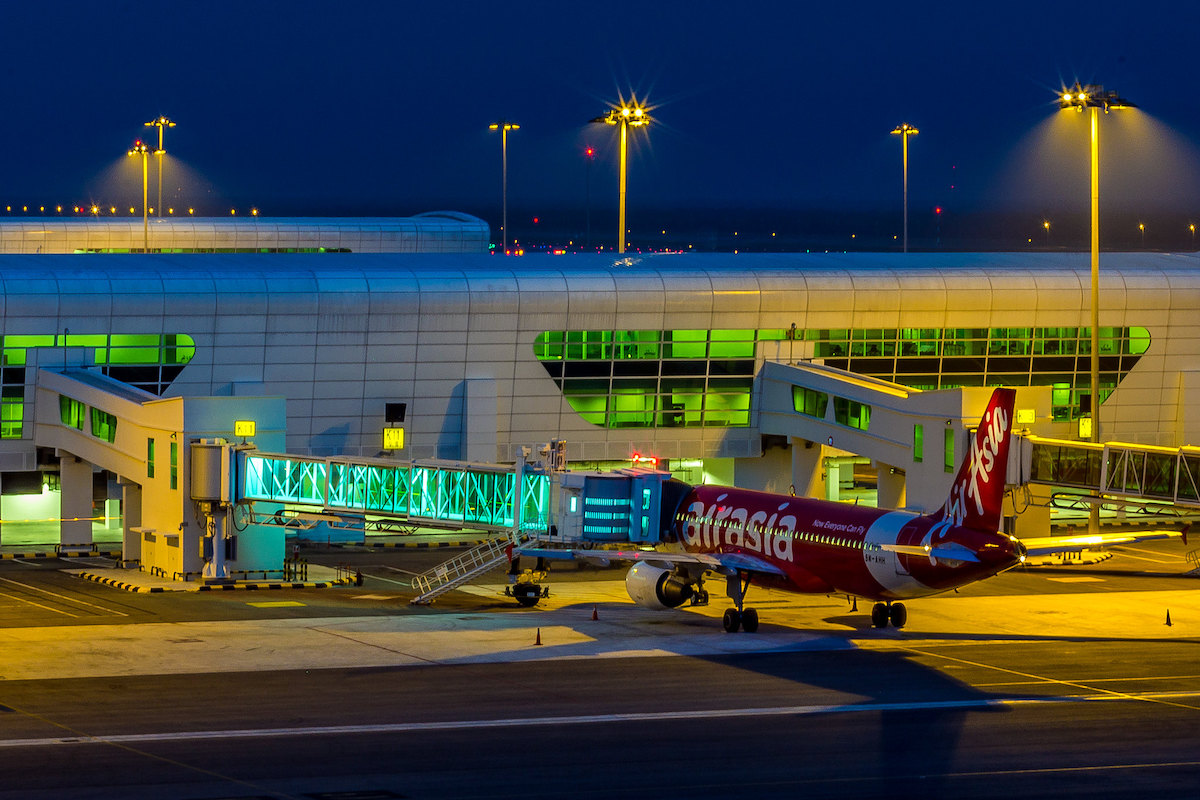Photo credit: An AirAsia plane at the Kuala Lumpur airport Flickr / Adznee Abas
Thai AirAsia sees robust travel demand as it rides the surging recovery of Thailand’s tourism industry. But the strong U.S. dollar is weighing on its financials.
The budget carrier, the Thailand-based affiliate of Malaysia’s Capital A, remains far smaller than it was three years ago. Thai AirAsia flew just 48 percent of its 2019 capacity; a drop that was mostly the result of still closed or restricted international markets. For example, more than 14 percent of the airline’s capacity flew to China or Hong Kong three years ago, nearly all of which has yet to resume, according to Diio by Cirium schedules.
But the lower capacity was not necessarily bad for Thai AirAsia, which is also Thailand’s largest domestic carrier. The Thai government’s promotion of domestic tourism and rapidly rising international arrivals, coupled with less capacity, meant flights were significantly fuller than three years ago and revenues per available seat kilometers, or unit revenues, were up 21 percent.
Thailand began easing its Covid rules earlier this year, before fully lifting requirements for arriving travelers on October 1. International arrivals in the country surged to 3.61 million people in the third quarter from nearly 498,000 in the first quarter, a more than seven-fold increase. And Thai AirAsia expects arrivals to hit the 10 million people for the year as forecast by the Tourism Authority of Thailand.
Thai AirAsia “expects a healthy resumption in tourism activities for the rest of the year,” the airline said in its third-quarter results Monday. As such, it plans to nearly fully recover domestic Thailand capacity in the fourth quarter, and fly roughly 50 percent of international capacity — including new routes to Dhaka, Fukuoka, and Lucknow — in the period. Domestic capacity stood at 62 percent of 2019 in the September quarter.
But the surge in leisure travel was not enough to overcome the financial pressure a strong U.S. dollar put on Thai AirAsia. The airline lost 4 billion Thai baht ($113 million) in the third quarter which it attributed to weaker the baht. Revenues were down 49 percent compared to 2019 to 4.9 billion baht.
The Thai currency opened at 35.9 baht to $1 on Monday, according to Bloomberg data. However, in the September quarter its value averaged 38.1 baht to a $1.
Thai AirAsia did not provide guidance for 2023. However, most airlines in the region, including giant Singapore Airlines, expect the continued easing of Covid restrictions to prompt a resurgence in travel demand.
Special Offer: Choose From Quarterly or Annual Subscription Plans
{{monthly_count}} of {{monthly_limit}} free stories left to read
SubscribeAlready a member? Sign in here
You Need an Airline Weekly Susbcription to Read This Story
Your story count resets on {{monthly_reset}}
Already a member? Sign in here
